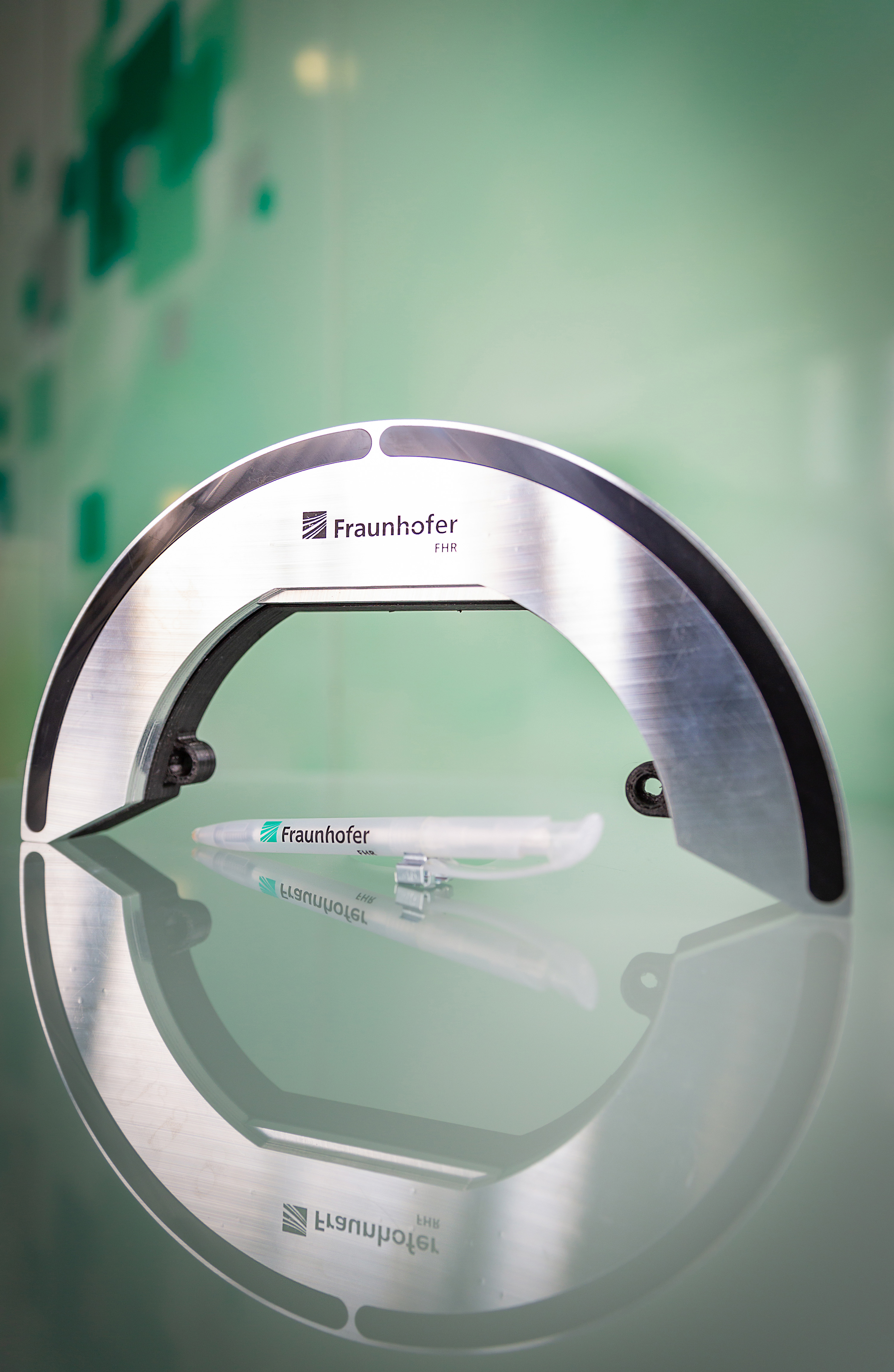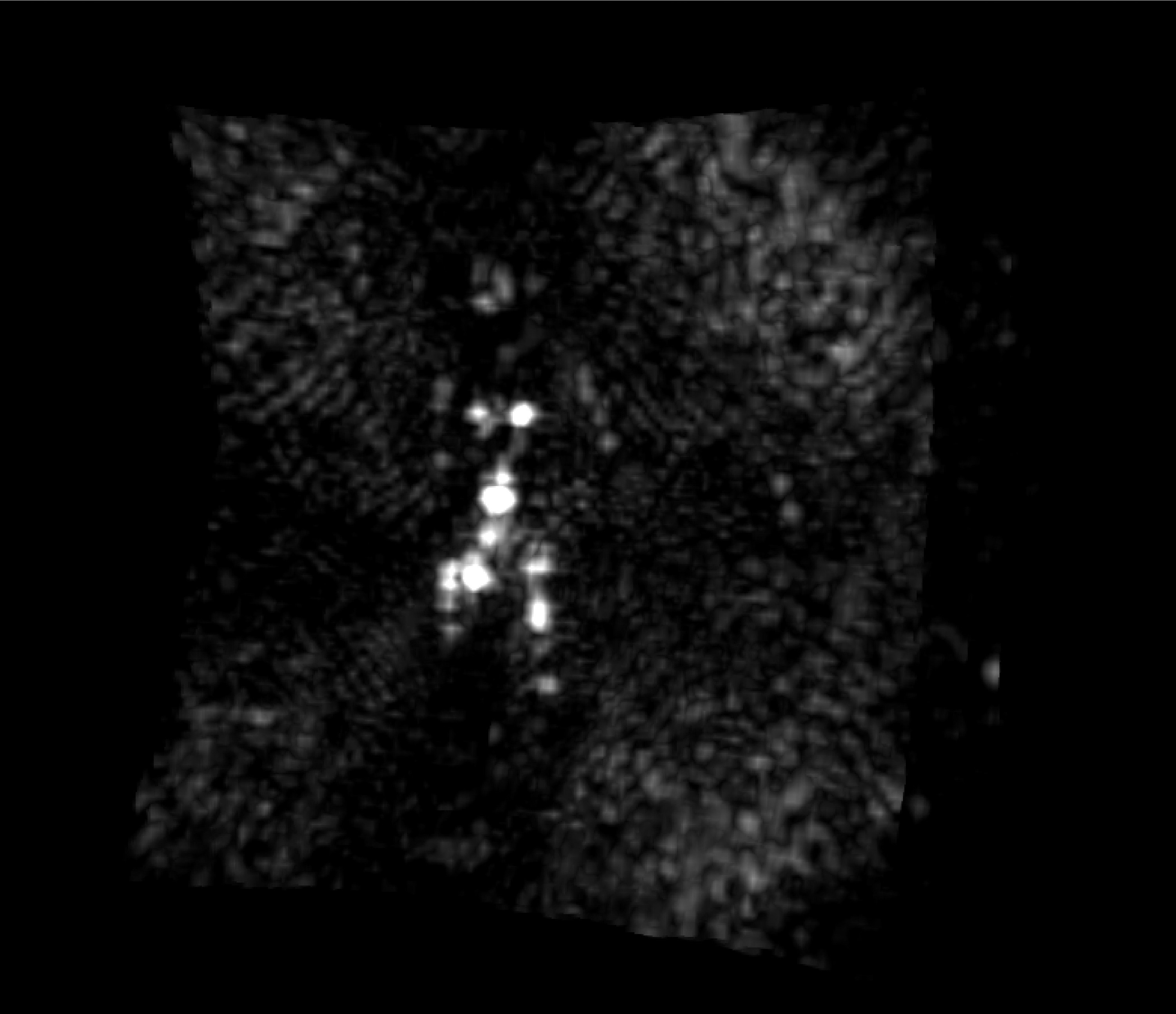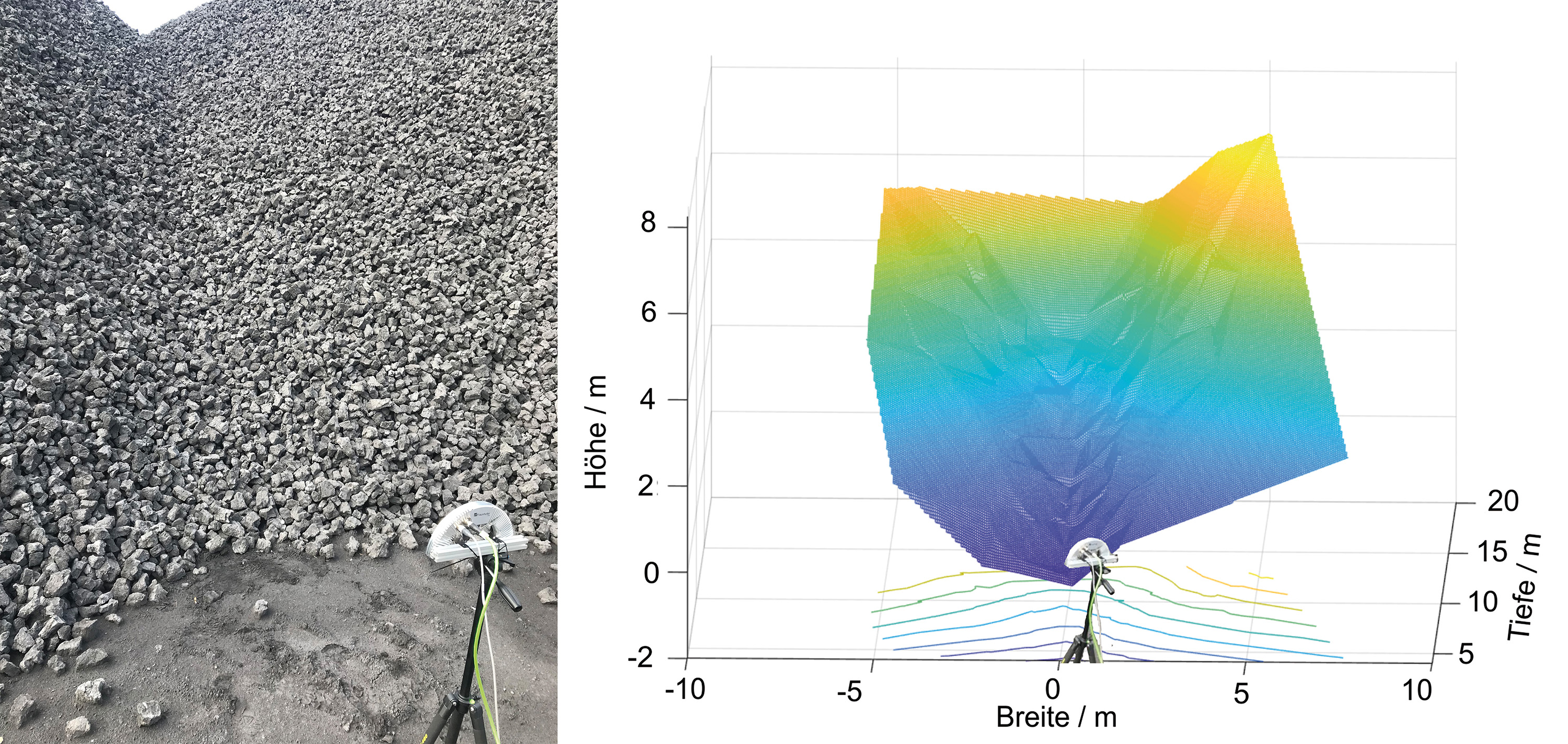Miniature MIMO radar sensors for three-dimensional visibility in harsh environmental conditions
The European Horizon 2020 research project SmokeBot was concluded in June 2018 with a successful demonstration in the fire exercise building of the Dortmund fire department. Fraunhofer FHR proved to be a reliable partner in the area of integrated MIMO radar modules.



Sensor Suite for the Exploration of Buildings Filled with Smoke
The project has pointed out new paths in sensor technology to provide robots with reliable orientation, create maps, and thus save lives even in parts of a building completely saturated
in smoke. The project was coordinated by Achim Lilienthal, Professor at the Swedish Örebru University. Within the scope of the SmokeBot project, the project team equipped a robot
provided by the Austrian company TAUROB with a multitude of environment exploring sensors. Besides laser measuring technology, infrared cameras, and gas sensors, this sensor
suite also included a highly integrated MIMO radar from Fraunhofer FHR.
Technological Advantage thanks to Silicon-Germanium Integration
In this process, the development at Fraunhofer FHR already started at the chip level. The researchers developed a complete MIMO chip set with an operating frequency of 120 GHz. Each chip contains either 4 transmit or 4 receive channels on a total size of less than 2x2 millimeters. Thanks to this technology, the team of researchers was able to implement 24 transmit
and 24 receive channels with a total module size of only 25 cm, thus providing 576 combinations for angle-resolved imaging. The individual pulses based on linear frequency
chirps were optimized to provide for the sequence of all 24 transmission pulses within less than three thousandth of a second.
Both, the high frequency electronics as well as the data collection were accommodated in the modules thanks to the use of compact digital circuit electronics. In addition, Fraunhofer FHR developed its own concepts for the synchronization of all 24 receive channels. It was possible to directly integrate the antenna elements into the housing.
This way, despite their internally very high complexity, the developed modules can easily be integrated into the measuring systems. The system has to provide one single supply voltage and a standard network interface for this.
3D Obstacle Recognition Thanks to Digital Image Reconstruction Algorithms
Each measurement data set is processed to calculate a three-dimensional image using the 3D near field reconstruction algorithms developed at Fraunhofer FHR. This allows for
the reliable locating of objects, doors, or walls even through smoke, fog or backlight. The image quality largely depends on the antenna arrangement. A small antenna array with a high density of transmitter and receiver elements offers very high image dynamics, while the distribution of the antennas across a larger area provides for a higher image resolution at the expense of lower image dynamics. The SmokeBot team at Fraunhofer FHR chose a semicircular distribution of the antenna elements developed specifically for the project. This allows to obtain an image resolution of less than one degree over a field of view of 45 degrees in all directions, even with only 24x24 channels. In the process, the special antenna arrangement distributes the imaging artefacts caused by the thinned-out aperture as evenly as possible across the entire angular range. This results in imaging dynamics of 17 dB.
Numerous Applications from the Detection of Humans up to Surface Reconstruction
Figure 2 shows what this means with regard to the image quality. A person was captured by a single radar measurement. The outline of the standing person can be made out clearly thanks to the high resolution. However, there are image artefacts around the person caused by the sparse antenna array. Nevertheless, the person clearly recognizable. Because of the short data acquisition time, the tracking of movement is one possibility of gaining a large amount of information from the data. Another application consists of the outstanding suitability of the radar technology for the scanning of rough surfaces. Figure 3 shows the three-dimensional capture of an ore deposit. For optical technologies, it is especially hard to capture dark surfaces outdoors. Here, a radar-based solution offers a significantly higher reliability. The possibilities of the newly developed technology prove to be diverse and are bound to open up numerous other research and application fields.
Successful Demonstration Even in Zero Visibility Conditions
On the occasion of the final review meeting at the end of June, the entire system was demonstrated in the fire exercise building of the fire department. In this demonstration, Fraunhofer FHR's MIMO radar was able to showcase its full capacities. Even when the building was completely filled with smoke and the LIDAR sensors as well as the installed cameras no longer provided an evaluable signal, Fraunhofer FHR's radar technology ensured the reliable operation of the complete system.